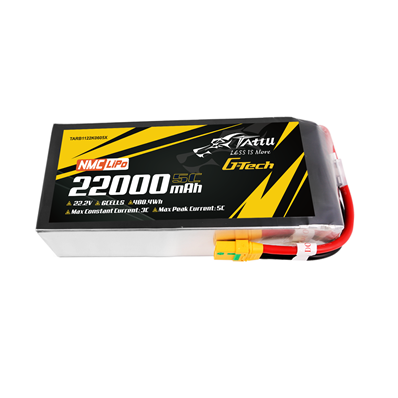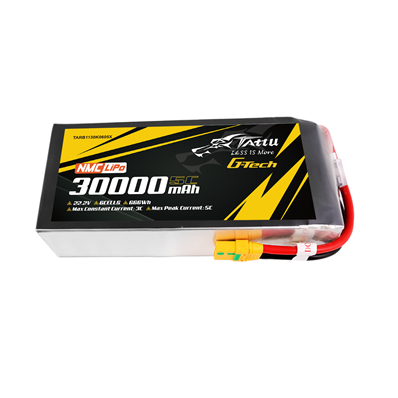What Are Medical Drones Used For?
The rapid advancement of drone technology has made significant inroads into various industries, with healthcare being one of the most promising areas. Medical drones, in particular, are revolutionizing how healthcare services are delivered, especially in hard-to-reach areas and during emergencies. Let's explore what medical drones are, their current uses, challenges, and what the future holds for these innovative tools.
What Is a Medical Drone?
A medical drone is an unmanned aerial vehicle (UAV) specifically designed or adapted to deliver healthcare-related services, such as transporting medical supplies, blood, vaccines, organs, or even medical equipment. These delivery drones can bypass traditional barriers such as traffic congestion, rough terrain, and other logistical challenges, enabling faster and more efficient healthcare delivery.
What are Medical Drones Used For?
Medical drones are transforming how essential health services are delivered by providing timely access to medical resources. Some common applications include:
●Transporting Emergency Supplies: Medical drones are used to deliver emergency supplies such as blood, plasma, vaccines, and medications to areas where transportation infrastructure is lacking or in crisis zones. This can make the difference between life and death in time-sensitive situations.
●Organ Transportation: Time is critical in organ transplants, and drones are being tested to transport organs like kidneys and livers quickly between hospitals. In 2019, a kidney was successfully delivered by drone to a hospital in Baltimore, marking a significant step forward for organ delivery technology.

●Delivering Medical Equipment: Medical drones are also being used to deliver essential equipment like defibrillators in cases of sudden cardiac arrest, where every minute counts.
●Remote Area Healthcare: For rural or isolated communities, medical drones provide essential healthcare services by delivering necessary medicines or diagnostic tools.
●Disaster Relief: In disaster zones, where roads may be impassable, drones can be critical in delivering medical aid and supplies to affected populations swiftly and efficiently.
What Drones are Used as Medical Drones?
Medical drones are typically lightweight, agile, and equipped with specialized features to ensure safety and efficiency during transport. Below are some types of drones commonly used for medical purposes:
●Fixed-Wing Drones: These drones resemble small airplanes and are highly efficient for covering long distances. They are primarily used for delivering medical supplies to remote or rural areas. Examples include the Zipline drones, which have been instrumental in delivering blood and vaccines in countries like Rwanda and Ghana.
●Multi-Rotor Drones: These are commonly used for short-range deliveries, especially within urban settings. They offer excellent maneuverability and vertical takeoff and landing (VTOL) capabilities. One notable example is Wingcopter, a hybrid drone that can transition between fixed-wing flight and multi-rotor modes, enabling both long-distance and precision delivery.
●Hybrid VTOL Drones: Combining the best of both worlds, these drones can take off and land vertically like helicopters while flying long distances like fixed-wing aircraft. These are ideal for areas with limited landing zones but still need to cover vast regions.
Here are five of the most widely used medical drone brands and models, along with their types and primary purposes in healthcare:
1. Zipline
●Model: Zipline Sparrow
●Type: Fixed-wing Drone
●Main Purpose: Long-distance delivery of medical supplies, including blood, vaccines, and medications, especially in rural or remote areas with limited infrastructure.
●Description: Zipline's drones are designed for efficient, long-range delivery. Zipline has been particularly successful in Rwanda and Ghana, where it supports national healthcare systems by delivering critical supplies to remote clinics.
2. Wingcopter
●Model: Wingcopter 198
●Type: Hybrid VTOL (Vertical Takeoff and Landing) Drone
●Main Purpose: Precision delivery of medical supplies over medium to long distances, capable of handling both urban and rural areas.
●Description: Wingcopter's hybrid design allows it to take off and land vertically like a multi-rotor, then transition to fixed-wing flight for efficient travel. It has been used in various healthcare applications worldwide, including delivering COVID-19 vaccines and essential medications.
3. Swoop Aero
●Model: Swoop Kookaburra
●Type: Fixed-wing Hybrid VTOL Drone
●Main Purpose: Transporting medical supplies, samples, and essential equipment to rural and isolated communities.
●Description: Swoop Aero’s Kookaburra drone operates in rugged and challenging terrains, supporting healthcare missions in Africa, the Pacific Islands, and other areas with difficult access. It is designed to meet regulatory standards for safe and reliable deliveries.
4. Matternet
●Model: Matternet M2
●Type: Multi-Rotor Drone
●Main Purpose: Short-range, rapid delivery of medical supplies, samples, and equipment in urban settings.
●Description: Matternet's M2 drone is optimized for precision delivery within urban environments. It’s used in countries like Switzerland and the U.S. for hospital-to-hospital transfers of lab samples and essential medical goods, providing a reliable and efficient solution for on-demand healthcare logistics.
5. Aerospace SORA-V
●Model: SORA-V
●Type: Multi-Rotor Drone
●Main Purpose: Transporting organs, blood samples, and emergency supplies over shorter distances in both urban and suburban settings.
●Description: SORA-V drones are capable of carrying heavier payloads over short to medium distances and are equipped with advanced sensors for secure and reliable transport. They are used in South Korea and other locations for critical deliveries between healthcare facilities, especially for organ transport.
What are the Problems with Drones in Healthcare?
While medical drones hold significant promise, there are several challenges to their widespread adoption:
●Regulatory Hurdles: The use of drones in healthcare faces stringent regulatory restrictions in many countries. Issues around airspace regulations, privacy concerns, and security need to be addressed before medical drones can be integrated into mainstream healthcare services.
●Reliability and Safety: Medical drones must be exceptionally reliable since they often carry life-saving supplies. Factors such as weather, mechanical failure, or interference from other aircraft can impact their ability to function effectively.
●Limited Battery Life: Current drone technology still faces limitations in battery life, which restricts the distance and duration they can travel. This can hinder their usefulness in remote areas that are far from healthcare hubs.
●Cost: The development, deployment, and maintenance of medical drones can be expensive, especially when considering training and infrastructure costs. This can be a barrier for developing nations or smaller healthcare providers.
●Public Acceptance: Public perception of drones, particularly in populated areas, can be a challenge. Concerns about noise, safety, and privacy could slow down their adoption in urban healthcare systems.
What is the Future of Medical Drones?
The future of medical drones looks incredibly promising, with advancements in technology and more supportive regulatory frameworks expected to expand their capabilities. Here are some trends that could shape the future:
●Advanced Autonomy: The future of medical drones may involve highly autonomous systems capable of making decisions in real time, avoiding obstacles, and optimizing flight routes. This would increase reliability and efficiency, especially in dynamic environments like cities.
●Longer Battery Life and Payload Capacities: Innovations in battery technology and drone design will allow medical drones to carry heavier payloads over longer distances. This will be crucial for delivering large quantities of supplies to remote locations or transporting organs over long distances.
●Integration with Telemedicine: Medical drones could become integral to telemedicine, delivering medical supplies, diagnostic kits, or even portable medical devices to patients in remote areas while doctors provide consultations via video calls.
●Networked Systems for Urban Use: In the future, smart cities may incorporate networks of medical drones into their healthcare and emergency response systems. These drones would work in conjunction with ambulances, hospitals, and first responders to deliver critical care faster than traditional methods.
●Global Implementation: As regulatory frameworks evolve and technology becomes more accessible, we can expect to see medical drones playing a vital role in global healthcare systems, particularly in addressing healthcare inequality by reaching underserved populations.
Conclusion
Medical drones are poised to be a game-changer in healthcare delivery, offering fast, efficient, and reliable solutions for a variety of medical needs. While challenges remain, particularly regarding regulation and technology, ongoing innovation suggests that medical drones will become an increasingly common tool in healthcare systems worldwide. From delivering life-saving vaccines to rural villages to transporting organs between hospitals, the future of medical drones is filled with potential to transform healthcare delivery as we know it. As a global leading lipo battery manufacturer, Grepow offers cutting-edge 6S 22.2V high-energy-density semi-solid state batteries. These batteries come in a capacity range of 16Ah to 84Ah, providing versatile options for various applications. With an impressive energy density of up to 320 Wh/kg, they are particularly well-suited for medical drones tasked with delivering essential supplies. If you have any questions or needs, please feel free to contact us at info@grepow.com.
Related Articles
-

What Are the Types of Unmanned Aircraft Systems (UAS)?
2025-04-01 -

What Is a Drone Battery Management System and How Does It Work?
2025-03-31 -

4S vs 6S LiPo: What’s the Difference?
2025-03-25
Related products
-

22000mAh 22.2V 6S Semi-Solid State Battery Pack with G-Tech
-

30000mAh 22.2V 6S Semi-Solid State Battery Pack with G-Tech
-

17000mAh 22.2V 6S Semi-Solid State Battery Pack with G-Tech

















































